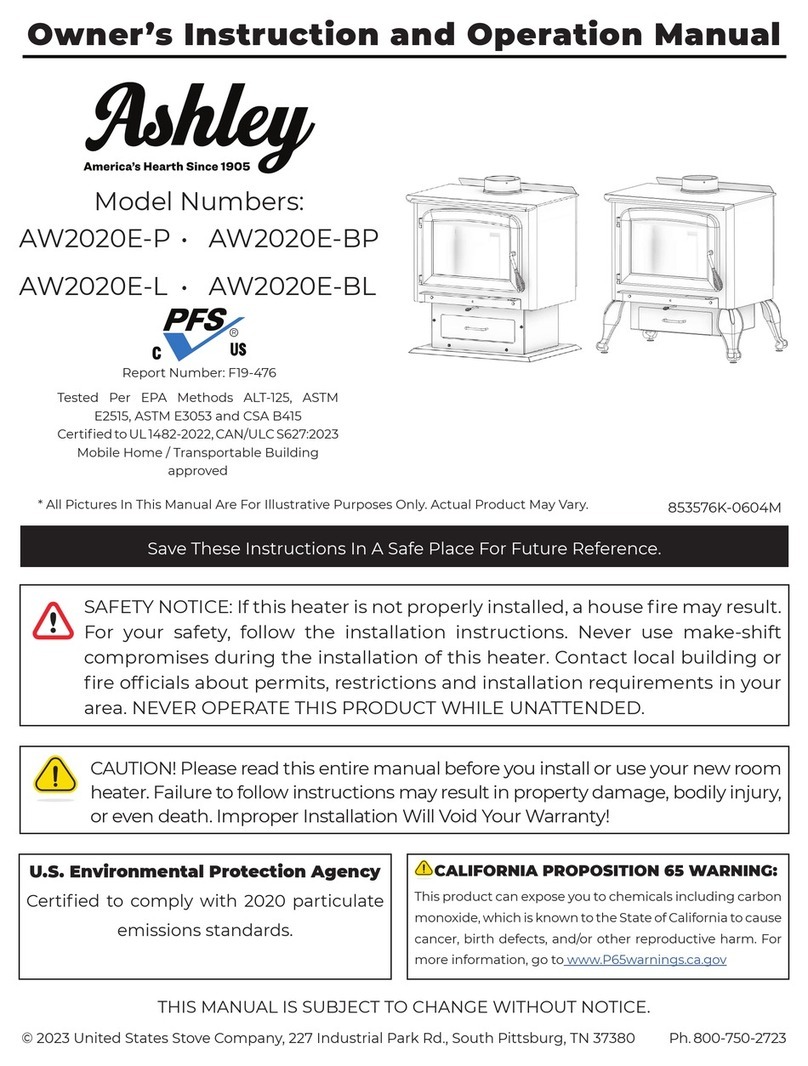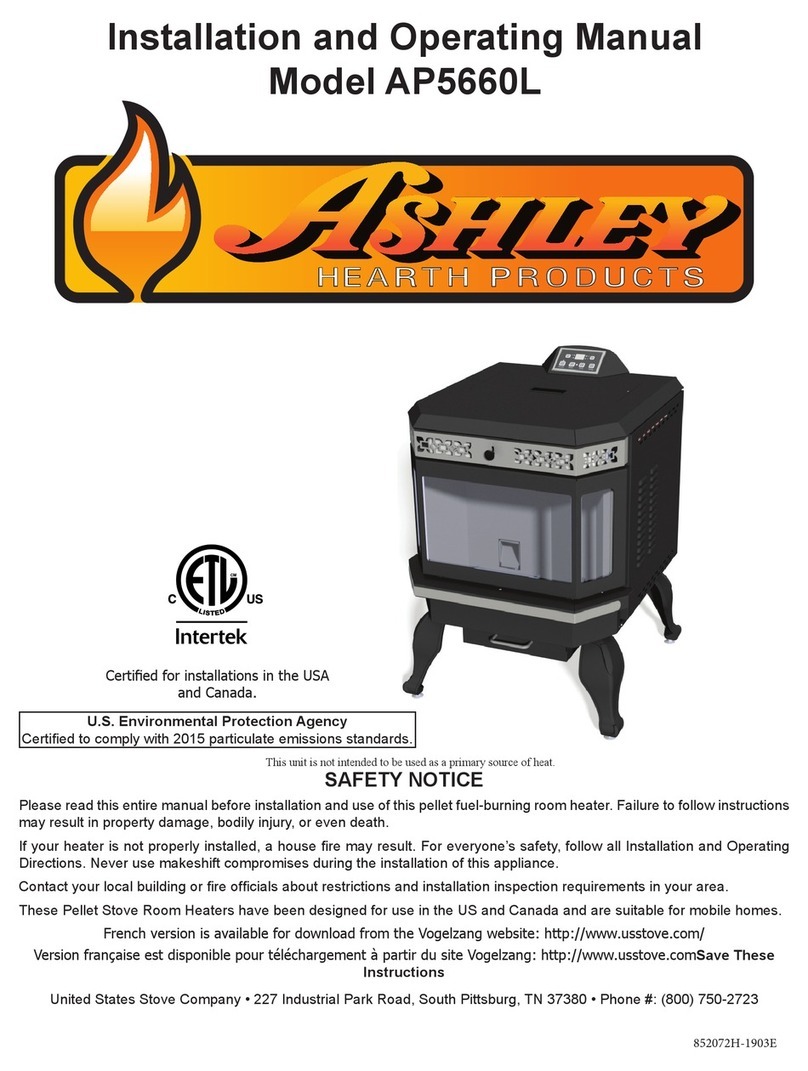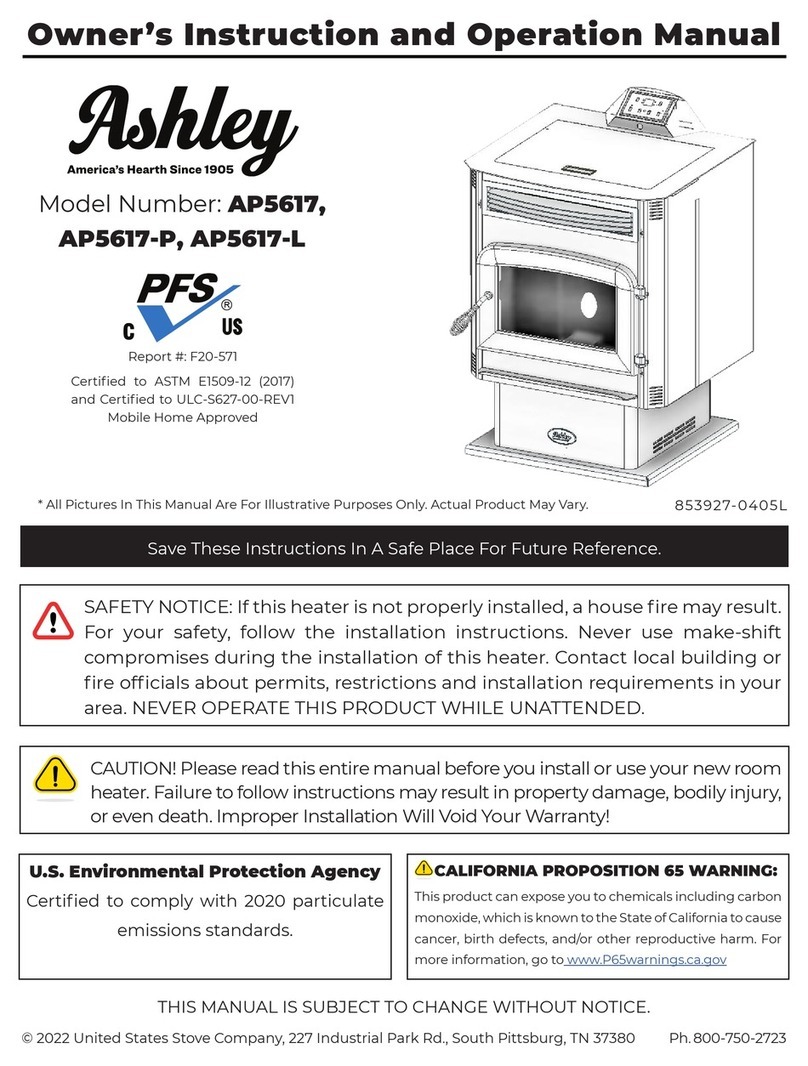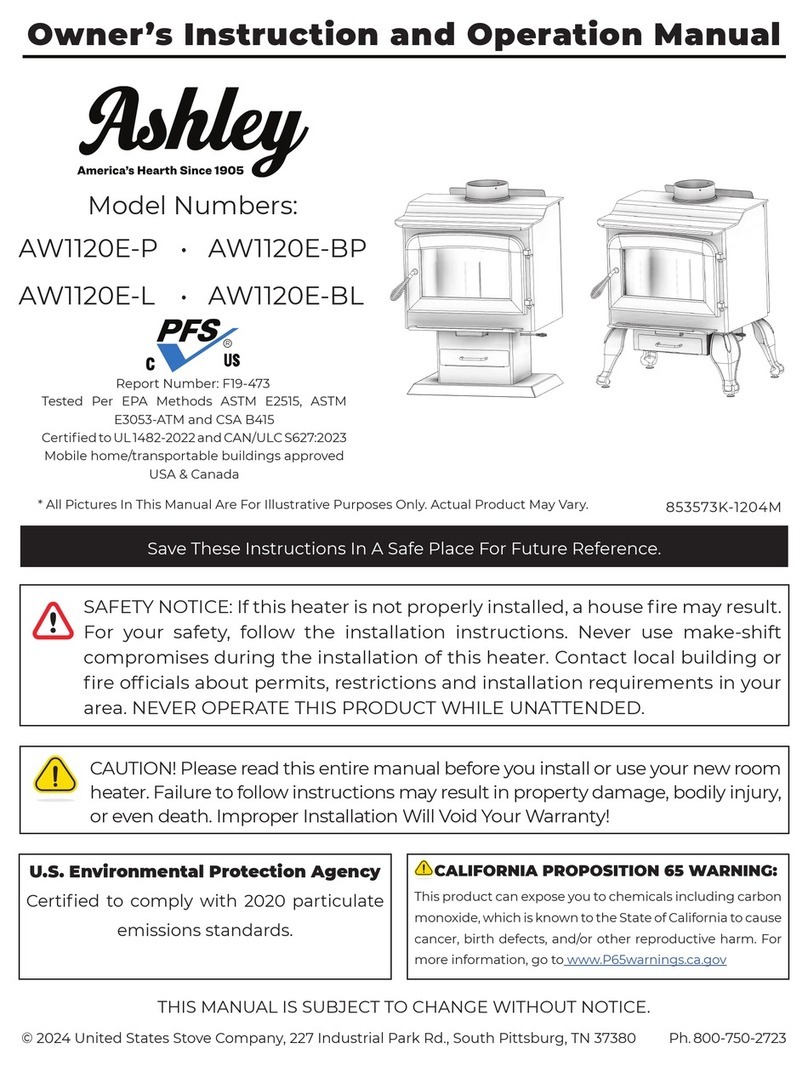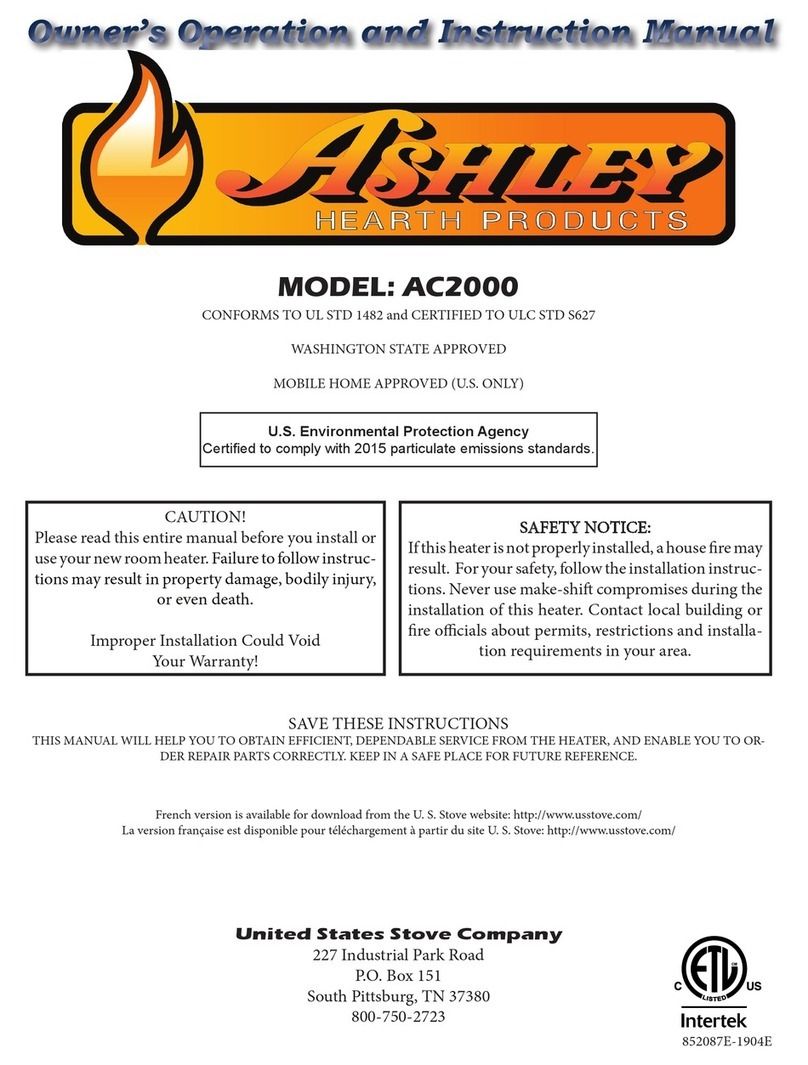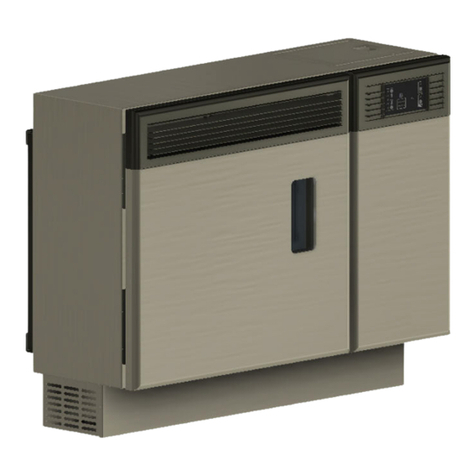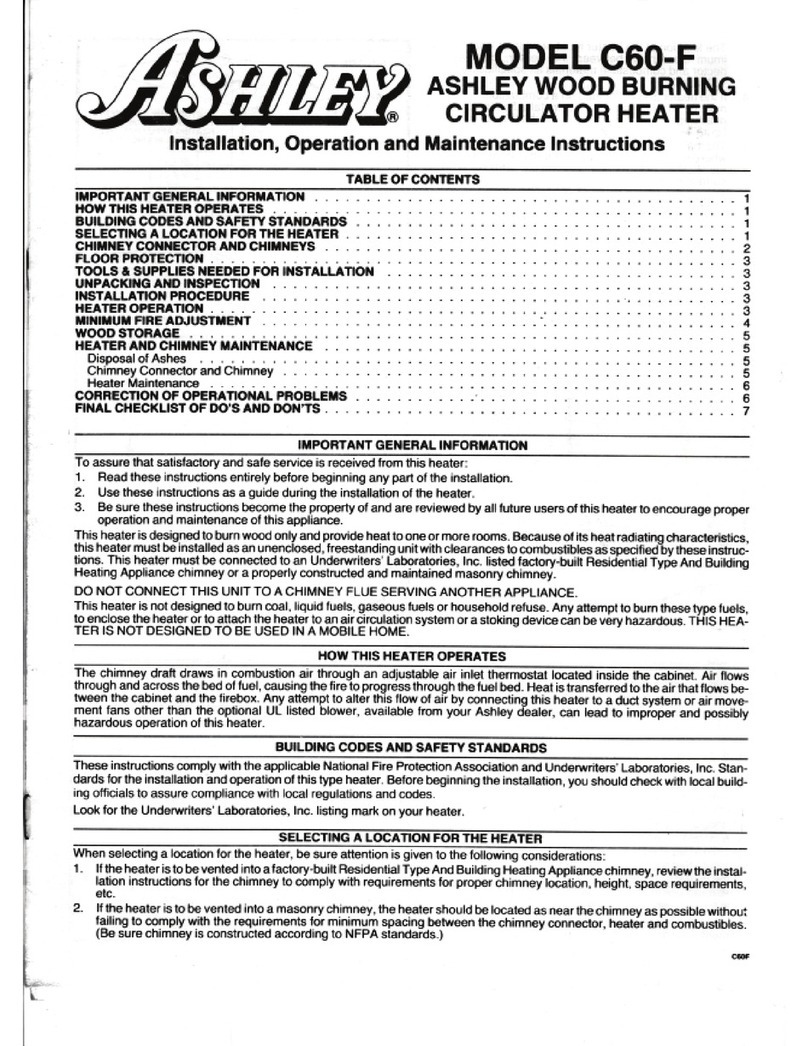
DO NOT USE CHEMICALS OR FLUIDS TO START THE FIRE - NEVER USE GASOLINE, GASOLINE-TYPE
LANTERN FUEL, KEROSENE, CHARCOAL LIGHTER FLUID, OR SIMILAR LIQUIDS TO START OR “FRESHEN
UP” A FIRE IN THIS STOVE. KEEP ALL SUCH LIQUIDS WELL AWAY FROM THE STOVE WHILE IT IS IN USE.
DO NOT BURN GARBAGE OR FLAMMABLE FLUIDS SUCH AS GASOLINE, NAPHTHA, OR ENGINE OIL.
HOT WHILE IN OPERATION. KEEP CHILDREN, CLOTHING AND FURNITURE AWAY. CONTACT MAY
CAUSE SKIN BURNS.
PROPER FUEL
THIS STOVE IS APPROVED FOR BURNING PELLETIZED WOOD FUEL ONLY ! Factory-approved pellets are
those 1/4” or 5/16” in diameter and not over 1” long. Longer or thicker pellets sometimes bridge the auger flights, which prevents
proper pellet feed. Burning wood in forms other than pellets is not permitted. It will violate the building codes for which the stove
has been approved and will void all warranties. The design incorporates automatic feed of the pellet fuel into the fire at a carefully
prescribed rate. Any additional fuel introduced by hand will not increase heat output but may seriously impair the stoves performance
by generating considerable smoke. Do not burn wet pellets. The stove’s performance depends heavily on the quality of your pellet
fuel. Avoid pellet brands that display these characteristics:
1. Excess Fines – “Fines” is a term describing crushed pellets or loose material that looks like sawdust or sand. Pellets can be
screened before being placed in hopper to remove most fines.
2. Binders – Some pellets are produced with materials to hold the together, or “bind” them.
3. High ash content – Poor quality pellets will often create smoke and dirty glass. They will create a need for more frequent
maintenance. You will have to empty the burn pot plus vacuum the entire system more often. Poor quality pellets could damage
the auger. We cannot accept responsibility for damage due to poor quality pellet.
PRE-START-UP CHECK
Remove burn pot, making sure it is clean and none of the air holes are plugged. Clean the firebox, and then reinstall burn pot. Clean
door glass if necessary (a dry cloth or paper towel is usually sufficient). Never use abrasive cleaners on the glass or door. Check fuel
in the hopper, and refill if necessary.
NOTE: The 5660 Hopper can hold up to 60 lbs. of pellets.
BUILDING A FIRE
Never use a grate or other means of supporting the fuel. Use only the burn pot supplied with this heater.
Hopper lid must be closed in order for the unit to feed pellets.
During the start-up period:
1. Make sure burn pot is free of pellets.
2. DO NOT open the viewing door.
3. DO NOT open the damper, the damper needs to be closed during start up.
4. DO NOT add pellets to the burn pot by hand.
NOTE: During the first few fires, your stove will emit an odor as the high temperature paint cures or becomes seasoned to the metal.
Maintaining smaller fires will minimize this. Avoid placing items on stove top during this period because paint could be affected.
THE HOTROD AUTOMATIC FIRESTARTER
1. Fill hopper and clean burn pot.
2. Press “On/Off” button. Make sure green light comes on.
3. The damper should be completely closed or open no more than ¼ of the way during start-up. This will vary depending on your
installation and elevation. Once fire is established adjust for desired flame increasing the amount the damper is open as the heat
setting is increased. (See “DAMPER CONTROL”)
4. Adjust feed rate to desired setting by pressing “Heat Level Advance” button.
If fire doesn’t start in 12 minutes, press “On/Off”, wait a few minutes, clear the burn pot, and start procedure again.
DAMPER CONTROL
The damper control lever is located on the back of the stove on the lower left side. The dampener adjusts the combustion air. This
control is necessary due to the varied burn characteristics of individual installations, different pellet brands and pellet feed rates.
It allows you to improve the efficiency of your stove. Providing correct combustion air will reduce the frequency of cleaning your
glass door and prevent the rapid buildup of creosote inside your stove and chimney.
You should adjust the damper based on the fire’s appearance. A low, reddish, dirty fire can be improved by turning the dampener
slightly to the right. A “blow torch” fire can be improved by turning the dampener to the left a little bit.
Operation
9





